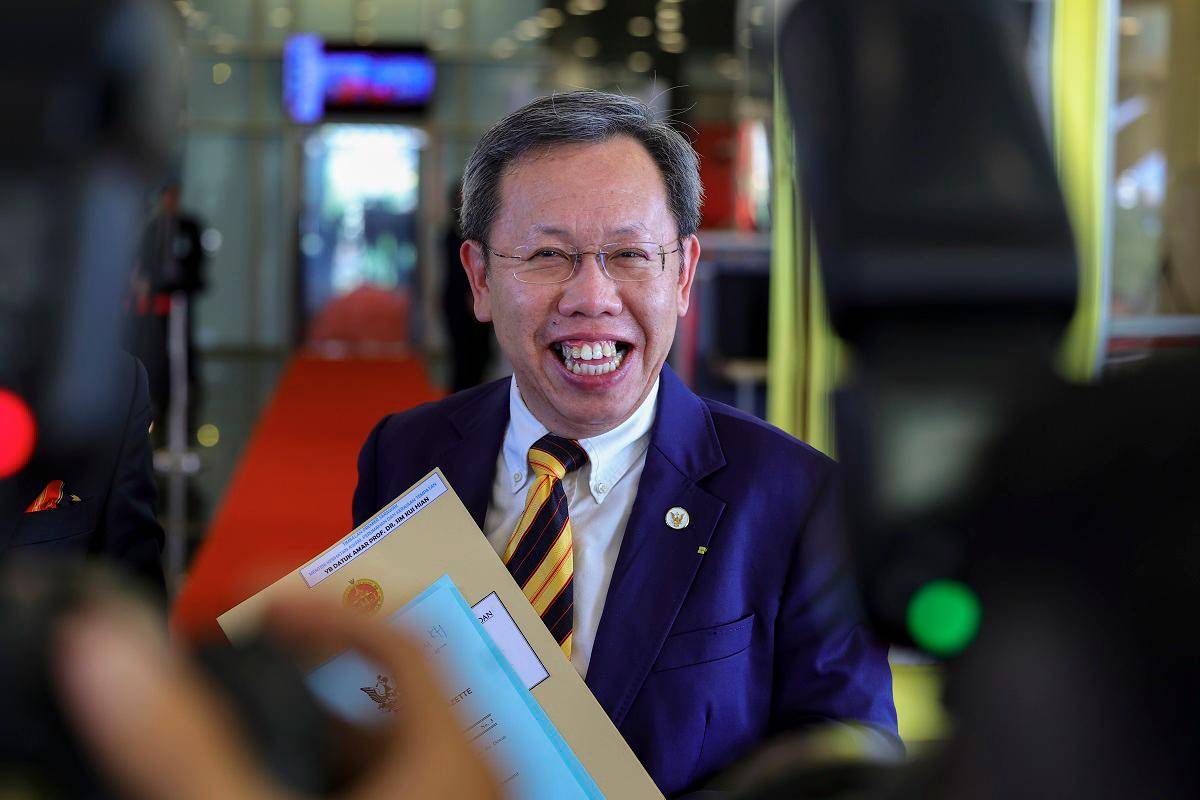BINTULU: Sarawak is facing a critical healthcare crisis that demands immediate federal intervention, with Deputy Premier Datuk Dr Sim Kui Hian (pic) revealing that the state requires an additional 11,000 medical posts across just seven major hospitals.
The alarming shortage was highlighted during Dr Sim’s visit to Bintulu Hospital yesterday, where he joined Tanjong Batu assemblyman Johnny Pang Leong Ming in distributing food to hospital staff.
The visit revealed the stark reality of Sarawak’s healthcare challenges, with Bintulu Hospital operating at merely half its required medical capacity.
The situation at Bintulu Hospital paints a concerning picture of the broader healthcare crisis across Sarawak. Of the 150 medical officer (MO) positions allocated to the hospital, only 80 are currently filled, leaving 70 critical vacancies unfilled.
“This means the hospital is operating at just half its required capacity,“ Dr Sim explained to reporters.
“The 80 doctors now working in Bintulu are effectively covering the workload of 150. They are doing double the amount of work, which leads to burnout. In such a situation, many may eventually choose to leave for the private sector.”
This unsustainable workload places enormous pressure on existing medical staff, creating a cycle where overworked doctors may seek opportunities in the private sector or in other states, further exacerbating the shortage.
The severity of Sarawak’s medical personnel shortage gained federal attention during the recent Malaysia Agreement 1963 (MA63) Implementation Action Council meeting held at the Satria Pertiwi Complex in Kuching. The issue was further validated when a Ministry of Health (MOH) team visited Sarawak in July to assess the situation firsthand.
“From the visit, MOH realised that for just those seven hospitals alone, Sarawak requires 11,000 additional posts. This is how severely under-staffed we are,“ Dr Sim stressed, highlighting the magnitude of the crisis that extends far beyond individual hospitals to encompass the entire state healthcare system.
The seven hospitals assessed represent only a portion of Sarawak’s healthcare infrastructure, suggesting that the actual statewide shortage may be even more substantial when all medical facilities are considered.
Dr Sim traced the roots of the current crisis back to 2011, when structural changes in Sarawak’s healthcare system created lasting imbalances that continue to affect medical services today.
“The problem dates back to 2011, when the Sarawak Heart Centre moved out of Sarawak General Hospital (SGH),“ he explained.
“The same number of staff had to cover more beds, while SGH itself was left with fewer staff but no additional manpower to cope. This imbalance continues to strain our healthcare workers to this day.”
This historical perspective reveals that the current shortage is not merely a recent development but the culmination of systemic issues that have been building for over a decade. The reorganisation of medical services without corresponding adjustments in staffing levels created structural deficits that have persisted and worsened over time.
One significant obstacle in addressing the doctor shortage is the lack of financial support for medical professionals willing to serve in Sarawak. Dr Sim identified relocation costs as a major deterrent for young doctors considering positions in the state.
“When the Ministry of Health employs doctors, most of them don’t want to come to Sarawak because no one pays for their logistical relocation,“ he said.
“These are young doctors starting their first jobs, often on contract. Without proper incentives, it is hard to attract and retain them here.”
This barrier is particularly significant for fresh graduates and young professionals who may lack the financial resources to relocate across Malaysia to take up positions in Sarawak.
The absence of relocation assistance creates an additional hurdle that discourages medical professionals from considering opportunities in the state.
The doctor shortage has direct implications for healthcare quality and accessibility across Sarawak. With existing medical staff handling double their intended workload, the risk of medical errors increases while the quality of patient care may suffer.
Additionally, the shortage may lead to longer waiting times, delayed treatments, and reduced access to specialised medical services.
Dr Sim emphasised that this situation creates inequality in healthcare access, stating that “Sarawakians deserve equal access to healthcare, and we must ensure our hospitals are staffed adequately to provide the best care possible.”
Despite highlighting the crisis, Dr Sim took time to acknowledge the extraordinary dedication of current healthcare workers who continue to serve under challenging conditions.
“I express my gratitude to all frontliners – doctors, nurses, and healthcare staff who continue to serve tirelessly, even during festive seasons and unexpected public holidays when patient appointments cannot easily be rescheduled,“ he said.
This recognition underscores the human cost of the shortage, as existing medical personnel work extended hours and carry increased responsibilities to maintain healthcare services for Sarawakians.
Dr Sim emphasised that resolving this crisis requires coordinated action between federal and state governments. The scale of the problem – requiring 11,000 additional medical posts – demands significant financial commitment and strategic planning that transcends state-level resources.
“Both the federal and state governments must come together to formulate a concrete plan to fund and fill the 11,000 posts needed in Sarawak’s hospitals,“ he stated.
“This issue must be addressed urgently.”
The Deputy Premier stressed that addressing the doctor shortage is fundamentally about ensuring healthcare equality for all Malaysians, regardless of their geographic location.
“This issue must be resolved to ensure Sarawakians receive the same standard of healthcare as other Malaysians,“ Dr Sim emphasised, framing the crisis not just as a state issue but as a matter of national healthcare equity.






